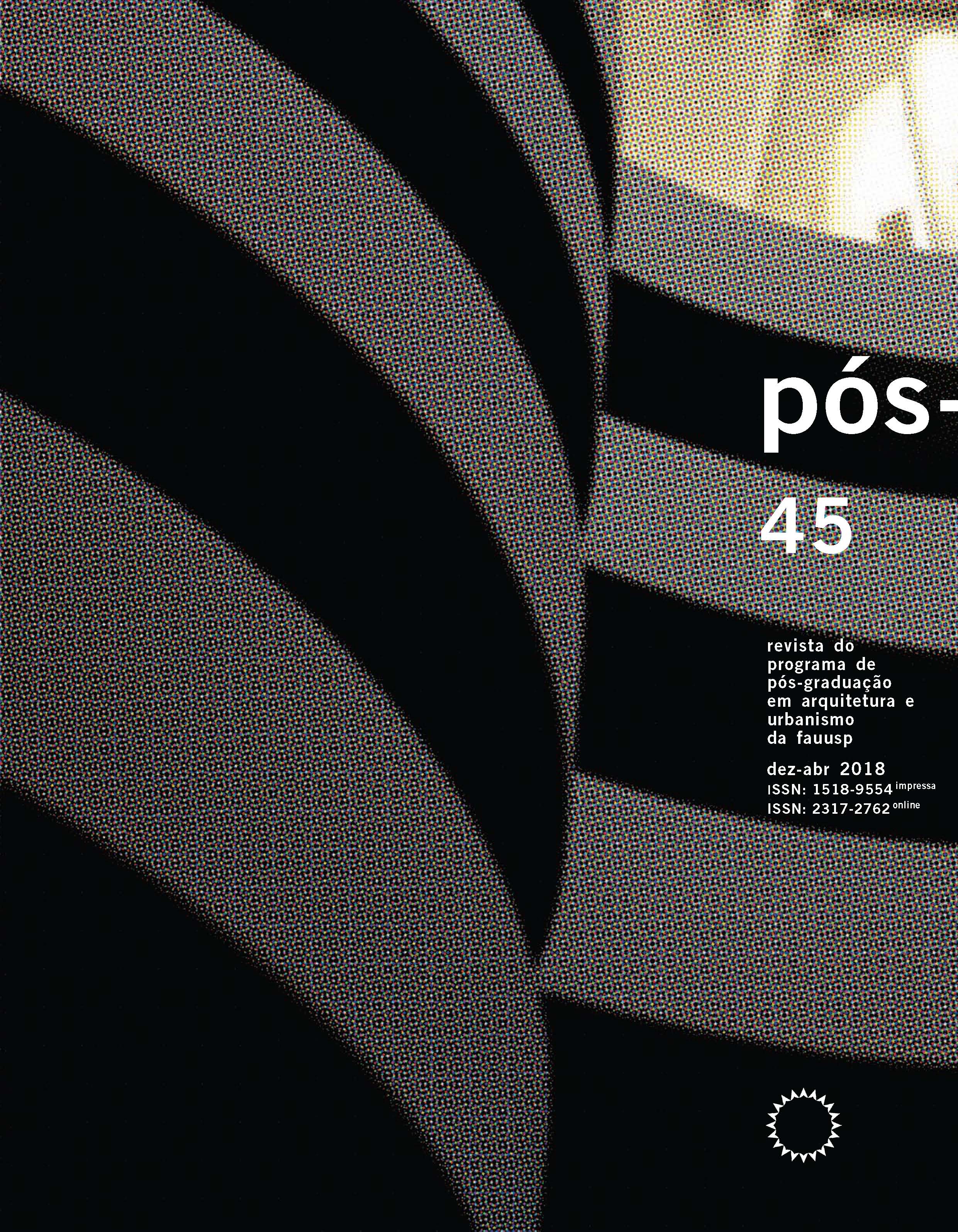The relation between perceptive comfort and the characterization of space with emphasis on internal environments
DOI:
https://doi.org/10.11606/issn.2317-2762.v25i45p150-168Keywords:
Perception. Comfort. Design features. Built environment.Abstract
The present study aims to show how the variations of the characteristics of the internal spaces, associated to the sight, influence the perceptual comfort of the individual. When perceiving an environment, each individual does it in a different way, therefore, it was possible to evaluate how the features of the environment can influence the users’ perception of the space. For this evaluation, an experiment that sought to associate different characteristics of the built environment to the positive and negative affects of the PANAS (Positive and Negative Affect Schedule) scale was developed. The experiment consisted of displaying images to the respondents who, observing the design characteristics presented in the images, associated their perception of the environment with the related feelings. The results indicated that the variations in the features of the environment have a strong influence on the individuals’ perception. The characteristics that brought greater comfort and feelings related to positive affections were the higher incidence of natural light, the use of high ceilings and the use of “cold” color. On the other hand, the antagonistic features to those had an effect on the feelings of negative affections in an almost inversely proportional way.
Downloads
References
ABRANTES, Monique. Um olhar cognitivo sobre o lugar de trabalho: avaliação de desempenho em ambiente de escritório, estudo de caso em empresa de advocacia. Dissertação (Mestrado em Arquitetura)- PROARQ/FAU/Universidade Federal do Rio de Janeiro, Rio de Janeiro, 2004.
BARNABÉ, Paulo Marcos Mottos. A luz natural como diretriz de projeto. Pós. Revista do Programa de Pós-Graduação em Arquitetura e Urbanismo da FAUUSP, n. 22, p. 62-81, 2007.
BUSSAB, W. O.; MORETTIN, P. A. Estatística Básica. 7ª edição, 1ª reimpressão, Ed. 2011.
CASTANHEIRA, Nelson P. Estatística aplicada a todos os níveis. Curitiba: IBPEX, 2010.
GALÁN-DÍAZ, Carlos Roberto.Responses to representations of the built environment: the influence of emotion, attention and perspective-taking.Tese (Doutorado em Psicologia) The Robert Gordon University, Outubro, 2011.
GALINHA, Iolanda Costa; RIBEIRO, José Luis Pais. Contribuição para o estudo da versão portuguesa da Positive and Negative Affect Schedule (PANAS) I – Abordagem teórica ao conceito de afecto. Análise Psicológica, v.23, n.2, Lisboa, 2005a, p.209-216.
GALINHA, Iolanda Costa; RIBEIRO, José Luis Pais. Contribuição para o estudo da versão portuguesa da Positive and Negative Affect Schedule (PANAS) II – Estudo psicométrico. Análise Psicológica, v.23, n.2, Lisboa, 2005b,219-227.
GENDERA, Andreia Karina; MATTOSO, Cecilia Lima Q.; BOENTE, Alfredo N.P. Avaliação das emoções dos consumidores idosos que participam de comunidades virtuais: Teoria dos conjuntos fuzzy. In: Simpósio de Excelência em Gestão e Tecnologia, 7, Rio de Janeiro, 2010. Anais…Rio de Janeiro, 2010.
GONÇALVES, Pollyanna, DORES, Welington, BENEVUTO, Fabricio. PANAS-t: Uma Escala Psicométrica para Medição de Sentimentos do Twitter.In: Seminário de Iniciação Científica da UFOP, 20, Ouro Preto, 2012. Anais...Ouro Preto, 2012.
KNEZ, Igor; KERS, Christina.Effects of indoor lighting, gender, and age on mood and cognitive performance. Environment and Behavior, v. 32, n. 6, 2000, p. 817-831.
OKAMOTO, J. Percepção Ambiental e Comportamento: visão holística da percepção ambiental na arquitetura e na comunicação. São Paulo: Editora Mackenzie, 2002.
PASQUALI, Luiz. Psicometria: teoria dos testes na psicologia e na educação. Vozes, 2009.
REIS, Antônio Tarcísio da Luz; LAY, Maria Cristina Dias. Avaliação da qualidade de projetos - uma abordagem perceptiva e cognitiva.Ambiente Construído, v.6, n.3, 2006, p. 21-34.
SIMÕES, Ana Paula. Experiência e Cognição no Lugar de Trabalho- Abordagem da Observação Incorporada na Avaliação Pós – Ocupação: Estudo de Caso em Escritório de Empresa do Setor de Educação Executiva.Dissertação (Mestrado em Arquitetura) – Programa de Pós-Graduação em Arquitetura da Universidade Federal do Rio de Janeiro. Rio de Janeiro, 2005.
STONE, A. Measurement of Affective Response. In S. Cohen, R. C. Kessler, & L. U. Gordon (Eds.), Measuring Stress: A guide for health and social scientists. New York: Oxford University Press, 1997.
WATSON, David; CLARK, Lee A.; TELLEGEN, Auke. Development and validation of brief measures of positive and negative affect: the PANAS scales. Journal of personality and social psychology, v. 54, n. 6, p. 1063, 1988.
YILDIRIM, Kemal; HIDAYETOGLU, M. Lutfi; CAPANOGLU, Aysen.Effects of interior colors on mood and preference: comparisons of two living rooms. Percept Mot Skills, 112, 2 p. 509-524, 2011.
Downloads
Published
Issue
Section
License

This work is licensed under a Creative Commons Attribution 4.0 International License.
DIADORIM - Diretório de Políticas Editoriais












